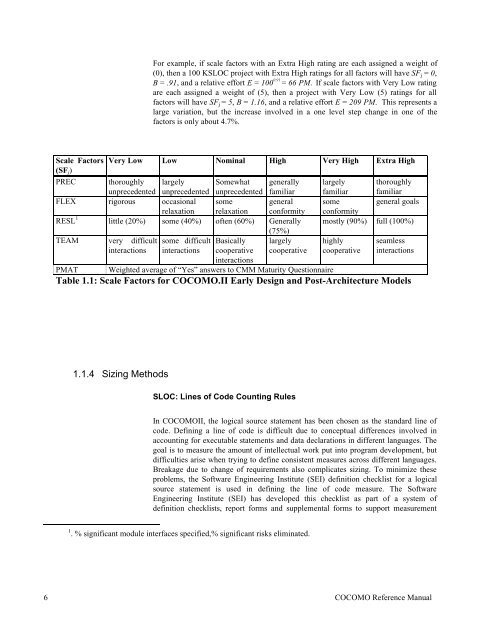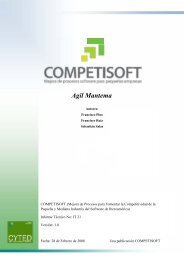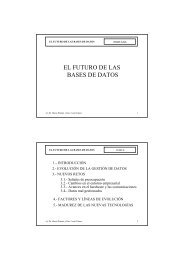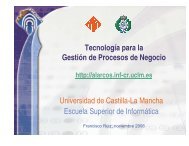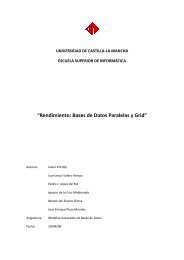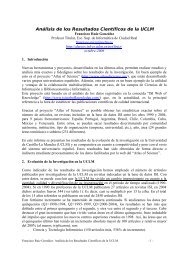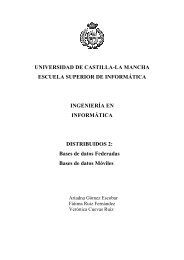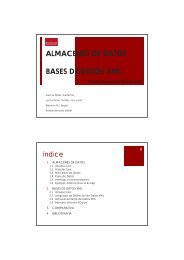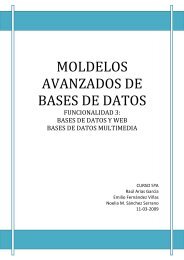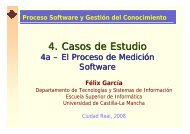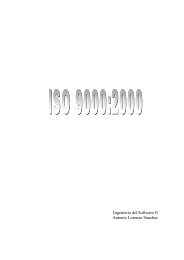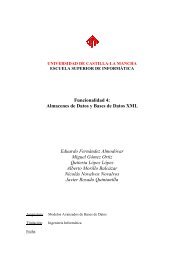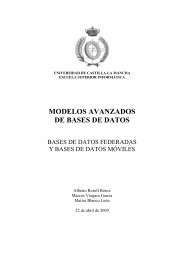USC COCOMOII - FTP - University of Southern California
USC COCOMOII - FTP - University of Southern California
USC COCOMOII - FTP - University of Southern California
You also want an ePaper? Increase the reach of your titles
YUMPU automatically turns print PDFs into web optimized ePapers that Google loves.
For example, if scale factors with an Extra High rating are each assigned a weight <strong>of</strong><br />
(0), then a 100 KSLOC project with Extra High ratings for all factors will have SFj = 0,<br />
B = .91, and a relative effort E = 100 0.91 = 66 PM. If scale factors with Very Low rating<br />
are each assigned a weight <strong>of</strong> (5), then a project with Very Low (5) ratings for all<br />
factors will have SFj = 5, B = 1.16, and a relative effort E = 209 PM. This represents a<br />
large variation, but the increase involved in a one level step change in one <strong>of</strong> the<br />
factors is only about 4.7%.<br />
Scale Factors<br />
(SFj)<br />
Very Low Low Nominal High Very High Extra High<br />
PREC thoroughly largely Somewhat generally largely thoroughly<br />
unprecedented unprecedented unprecedented familiar familiar familiar<br />
FLEX rigorous occasional some general some general goals<br />
relaxation relaxation conformity conformity<br />
RESL 1<br />
little (20%) some (40%) <strong>of</strong>ten (60%) Generally mostly (90%) full (100%)<br />
TEAM very difficult<br />
interactions<br />
some difficult<br />
interactions<br />
Basically<br />
cooperative<br />
interactions<br />
(75%)<br />
largely<br />
cooperative<br />
highly<br />
cooperative<br />
seamless<br />
interactions<br />
PMAT Weighted average <strong>of</strong> “Yes” answers to CMM Maturity Questionnaire<br />
Table 1.1: Scale Factors for COCOMO.II Early Design and Post-Architecture Models<br />
1.1.4 Sizing Methods<br />
SLOC: Lines <strong>of</strong> Code Counting Rules<br />
In <strong>COCOMOII</strong>, the logical source statement has been chosen as the standard line <strong>of</strong><br />
code. Defining a line <strong>of</strong> code is difficult due to conceptual differences involved in<br />
accounting for executable statements and data declarations in different languages. The<br />
goal is to measure the amount <strong>of</strong> intellectual work put into program development, but<br />
difficulties arise when trying to define consistent measures across different languages.<br />
Breakage due to change <strong>of</strong> requirements also complicates sizing. To minimize these<br />
problems, the S<strong>of</strong>tware Engineering Institute (SEI) definition checklist for a logical<br />
source statement is used in defining the line <strong>of</strong> code measure. The S<strong>of</strong>tware<br />
Engineering Institute (SEI) has developed this checklist as part <strong>of</strong> a system <strong>of</strong><br />
definition checklists, report forms and supplemental forms to support measurement<br />
1 . % significant module interfaces specified,% significant risks eliminated.<br />
6 COCOMO Reference Manual


